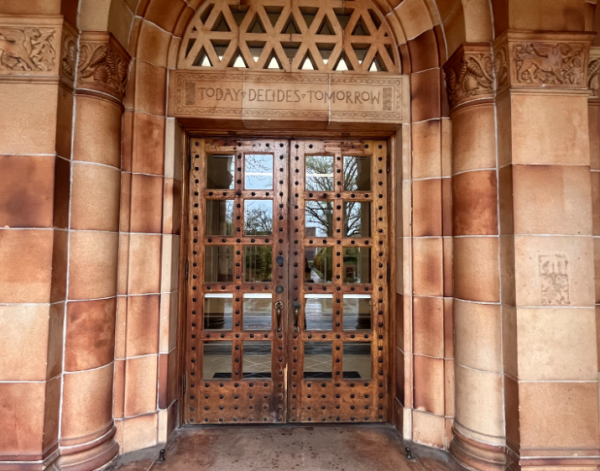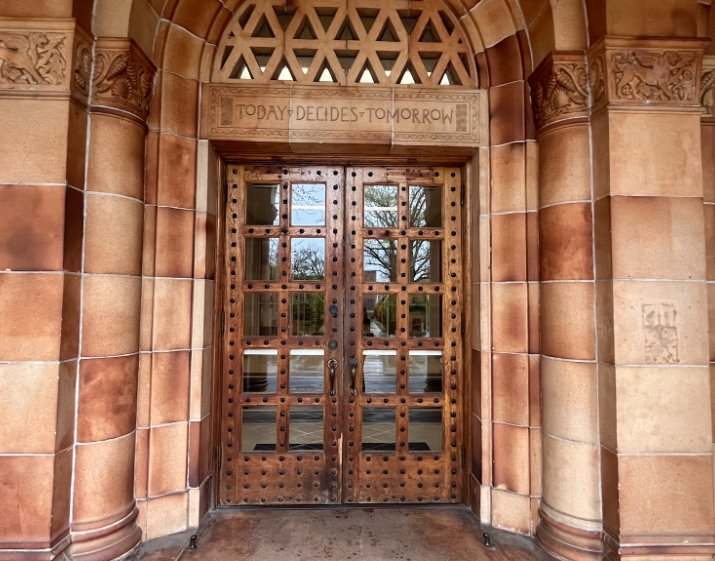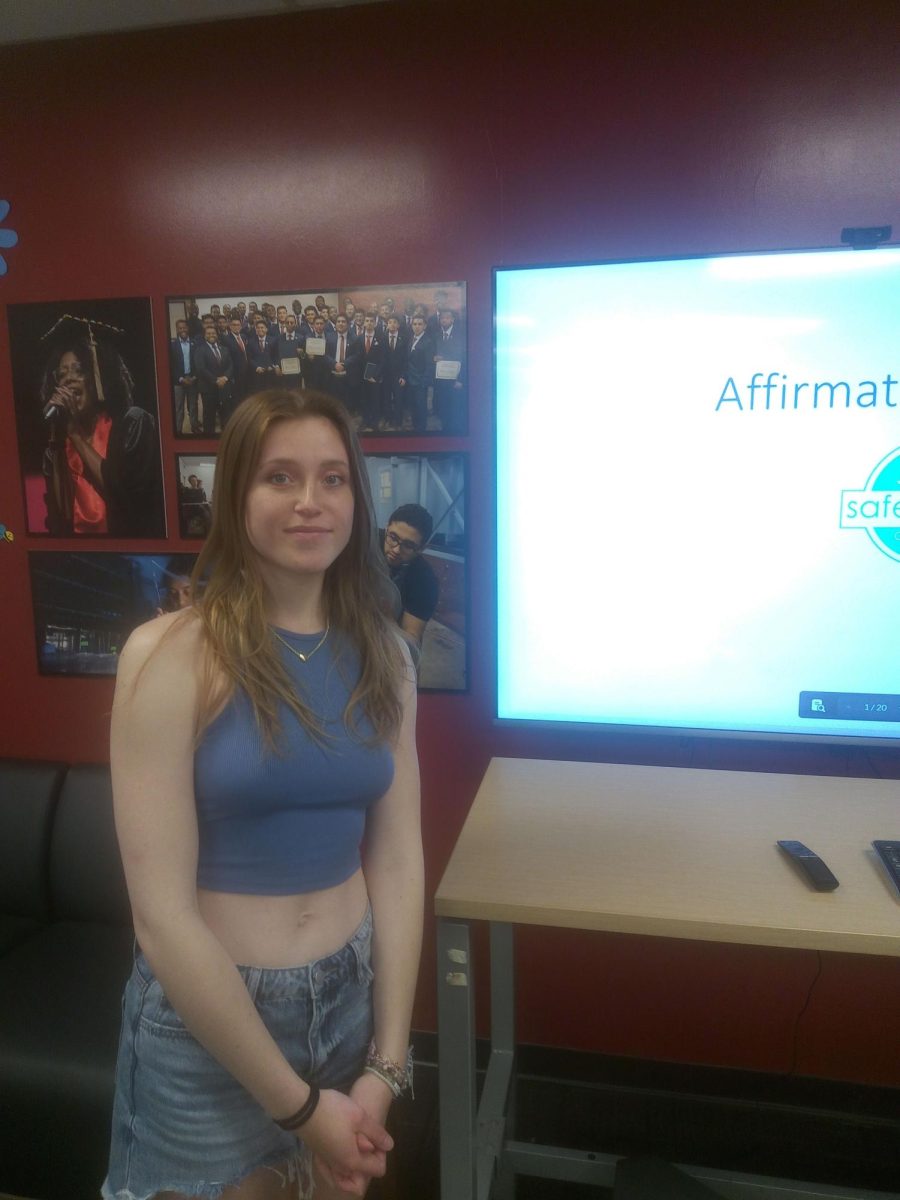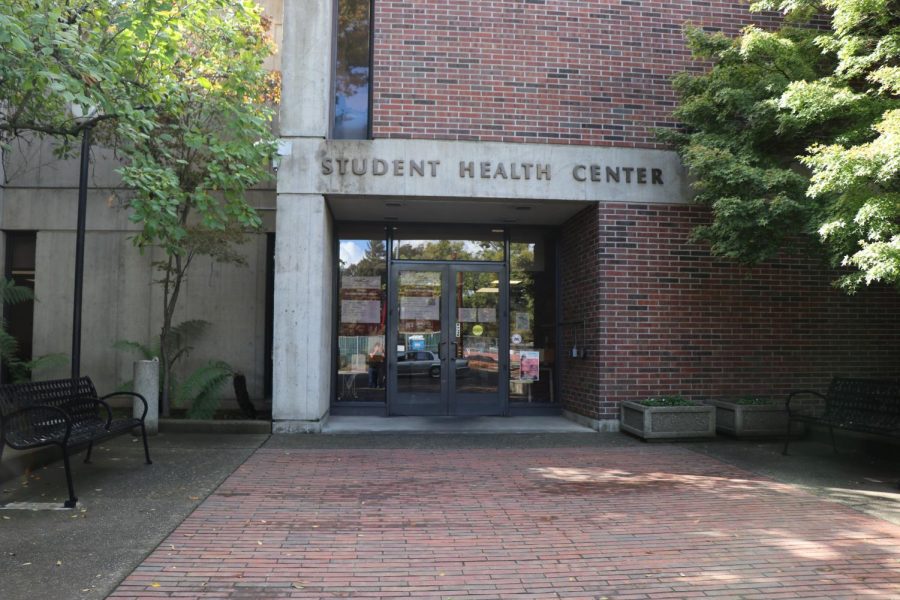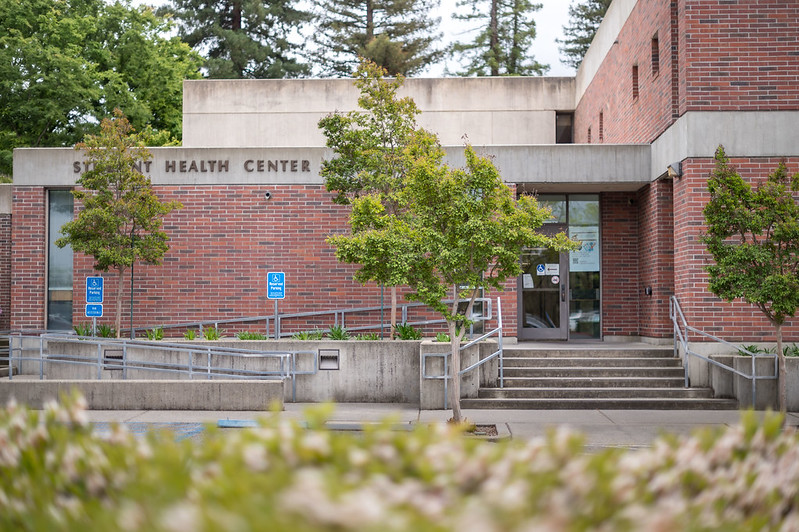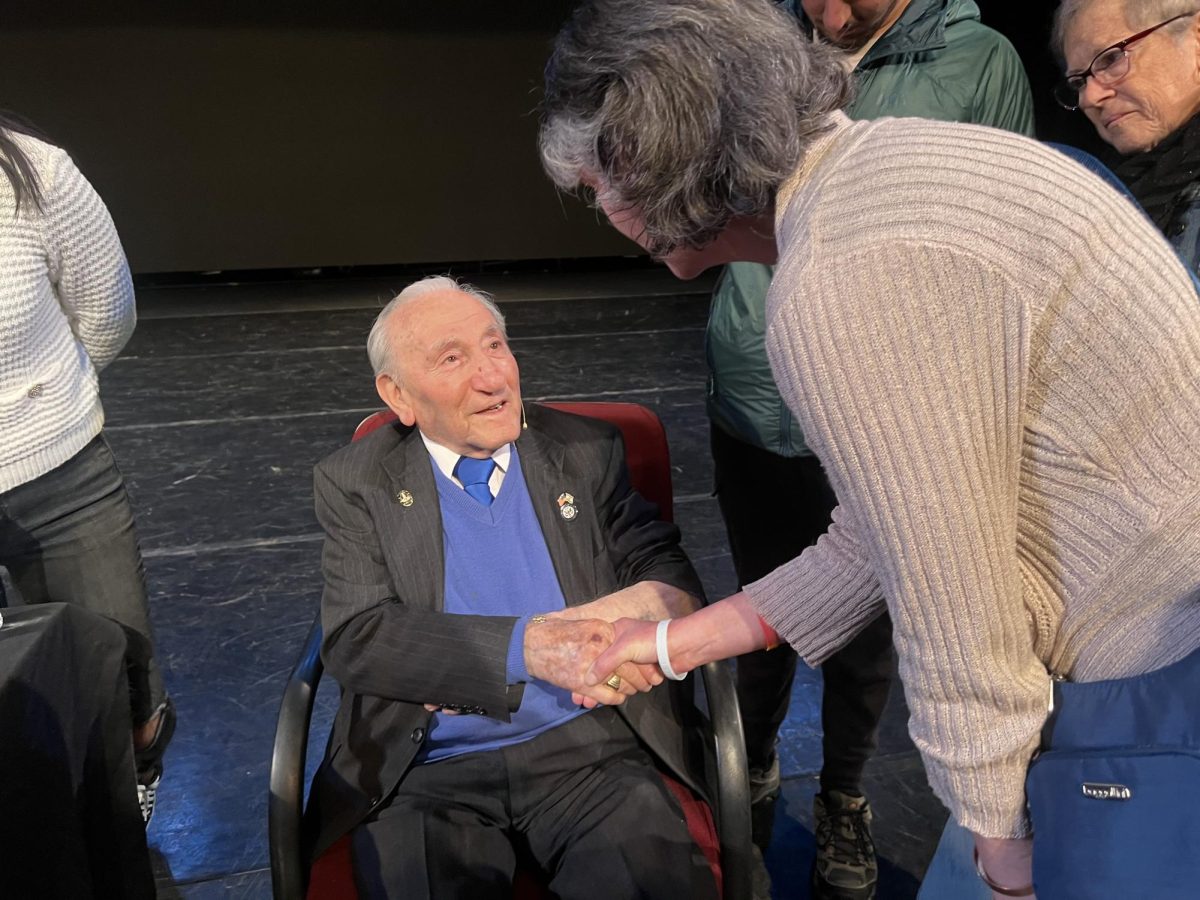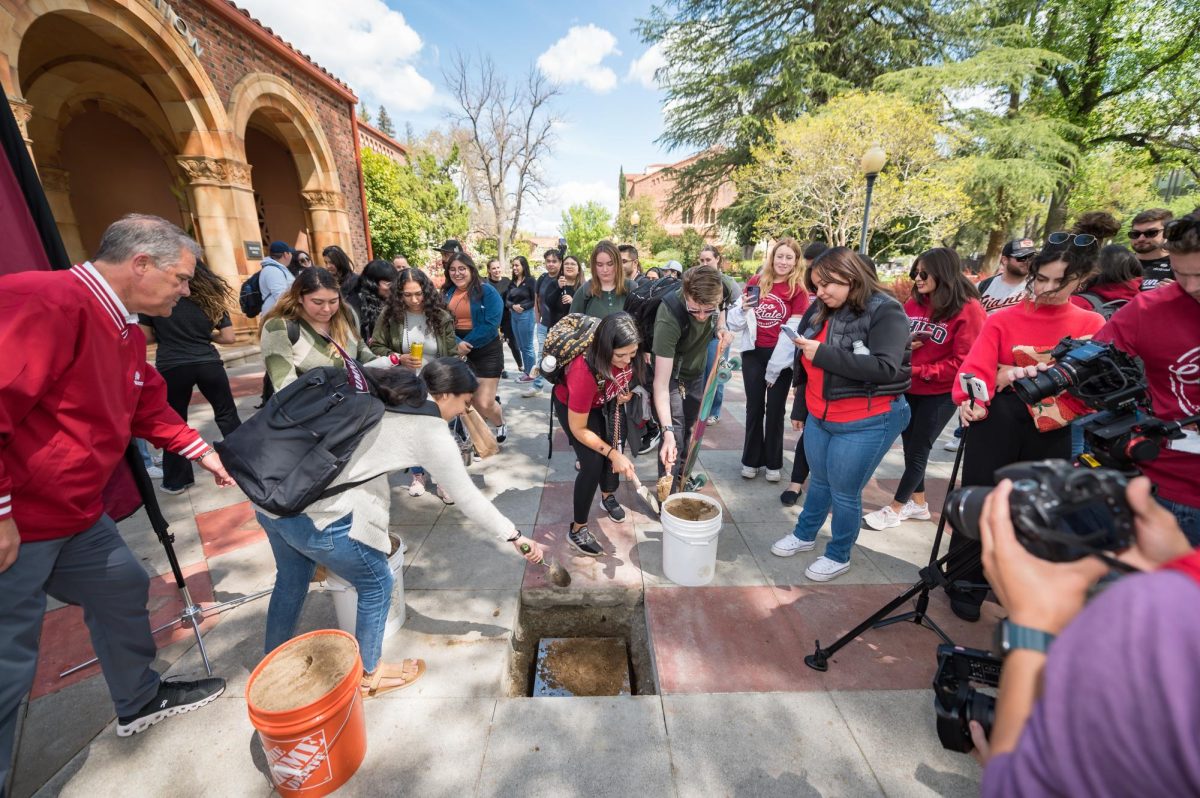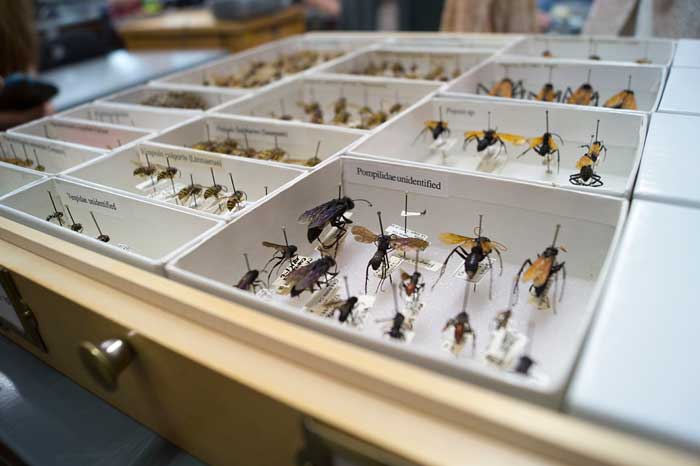
While Holt Hall can house hundreds of students throughout its three stories of classrooms, it is also home to tens of thousands of insect specimens in the entomology collection.
In the science department, there is a group of undergraduate and graduate students working alongside Dr. Donald Miller, biological science professor, to learn how to identify and classify insects.
Miller came into the department in 2002 adding to the entomology collection his predecessor, Dr. David Kisner, started in 1959.
“Some of the specimen holdings go back a full century or more,” he said.
While Miller has personally contributed mainly butterflies and moths to the collection, he is not the only one. Students working with him have contributed as well.
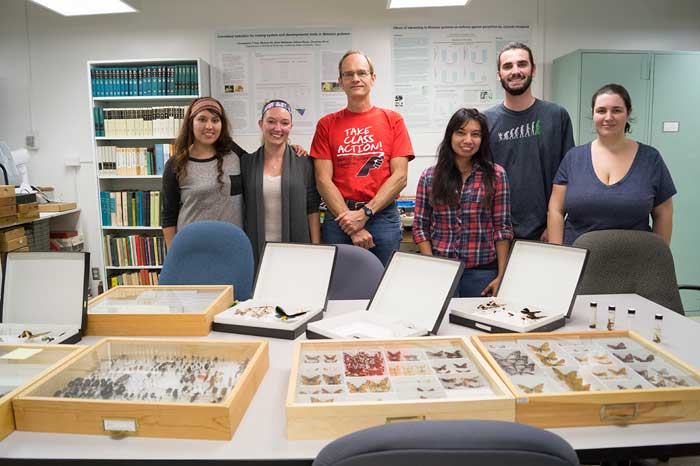
Karen Galven, senior biology major (left),
Sarah Santich, senior biology major (second from the left), Dr. Donald Miller, biology professor (third from left), Irene Lona, gradate student (third from right), Jamison Sydnor, senior biology major (second from right), Candice Sawyer, graduate student (right). Photo credit: Grant Casey
Students in the Chico State entomology club learn how to classify, identify, curate and properly label the insects they are working with.
Each student in the club has a certain region in the world they identify insects from, he said.
Sarah Santich, senior ecological, evolutionary and organismal biology major, works with Neotropical butterflies mainly from Brazil and Belize.
“I identify the butterflies in the region I’m working with down to the species as best as I can,” Santich said. “That way we can have them for references in case people want to do research on a region of butterflies, or find a butterfly, we can show them exactly where they’re at.”
Santich took a class, also taught by Miller, prior to being in the entomology club and therefore has her own collection of insects she found from Chico.
Depending on the butterflies and their flight patterns, each one ranges in difficulty when catching them. In general, the smaller butterflies are usually more difficult to catch because they’re faster, Santich said.
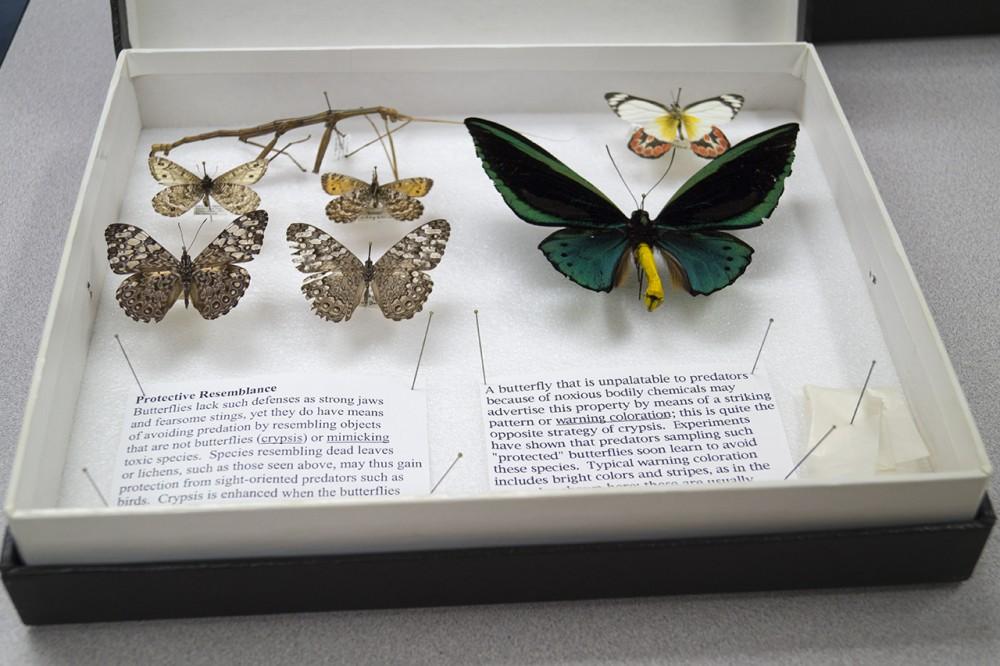
The insect holdings on campus have tens of thousands of specimens including insects native to the U.S. but also some from unique areas on the planet, Miller said.
Karen Galvan, senior biology major, works with butterflies from Papua New Guinea. She said there is an insect called magi cicada septendecim, more commonly known as the 17-year locust, native to Canada and the United States. The locust only comes out every 17 years to mate, lay its larva in the ground and then die.
These students are able to sign up to work with Miller and earn units for the work they do.
Prospective students can come to campus and look at the insects. The entomology club shows off some of the current work they are doing with insect identification. Miller said they are doing this in hopes of making students aware there is something like this they can get involved in on campus.
Candice Sawyer, graduate biology major who works with Eurasian butterflies, said there is also a website the club is working on to make access to the club and the work they are doing more available to anyone interested.
The insect holdings include, but are not limited to, a large amount of specimens such as:
• Dragonflies
• Wasps
• Stick Bugs
• Beetles
• Spiders
After the students correctly identify, classify and label the insects, they are all carefully pinned down in covered glass boxes and stored for future reference.
Miller, as well as the entomology club students, said they are very passionate about what they do and hope to get their work more noticed. They welcome people with a genuine interest to the study of entomology.
“Who knows how many people have an interest in entomology and have no idea it’s a possibility,” said Jamison Sydnor, biology major who works with spiders from Papua New Guinea.
Miller was excited to hear a recent success story of a previous entomology student who received her bachelor’s degree from Chico State. She recently got a job in Bakersfield in the division of mosquito abatement for Kern County.
Miller said the education students receive at Chico State along with their hard work can help them go places.
“It’s nice to have people come through here with a genuine interest in entomology,” Santich said. “I had no idea this was here until last year, so we’ll have to change that.”
Sabrina Salvatore can be reached at [email protected] or @ssalvatore09 on Twitter.




